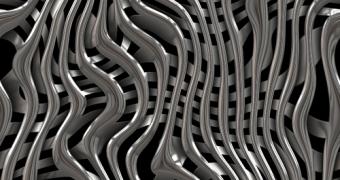Everyone has seen or at least heard of the regenerating robot in the science-fiction movie 'Terminator', or of the self-healing Wolverine from 'X-men'; well, now this ability to self-heal has become a reality, thanks to researchers at Arizona State University.
They have been working on structural health monitoring systems and came up with more than one ways of identifying damage to a structural system, and even repairing it.
The team created a material that besides being able to sense damage in its structural materials – like cracking in a fiber-reinforced composite, it is also able to heal it.
Henry Sodano and colleagues are the geniuses behind this new, autonomous material, and they had the idea of using 'shape memory' polymers, that contained an embedded fiber-optic network.
This fiber-optic network works as a damage detection sensor and also as the thermal stimulus delivery system, that produces a response which mimics the advanced sensory and healing traits we can find in biological systems.
Then, an infrared laser transmits light through the fiber-optic system to heat the material locally, thus stimulating the toughening and healing mechanisms.
The material system can increase the toughness of a specimen by 11 times, and even more interesting, after the specimen is toughened, the crack can be perfectly sealed using the shape-memory effect.
This method actually restores 96 percent of the object's resistance, and the researchers say that once the crack is closed, the newly obtained material is almost five times as tough as the original specimen, even though it has been strained past its original failure strain point by a factor of four.
Another innovation is the fact that the material and healing process can be applied while the structure is in operation, and this is a first compared to the existing healing techniques.
These 'autonomous adaptive structures' were supposed to imitate the ability of biological systems like bones, to sense the existence of damage, stop the progression and start the regeneration process.
The invention is described in the Journal of Applied Physics.

 14 DAY TRIAL //
14 DAY TRIAL //